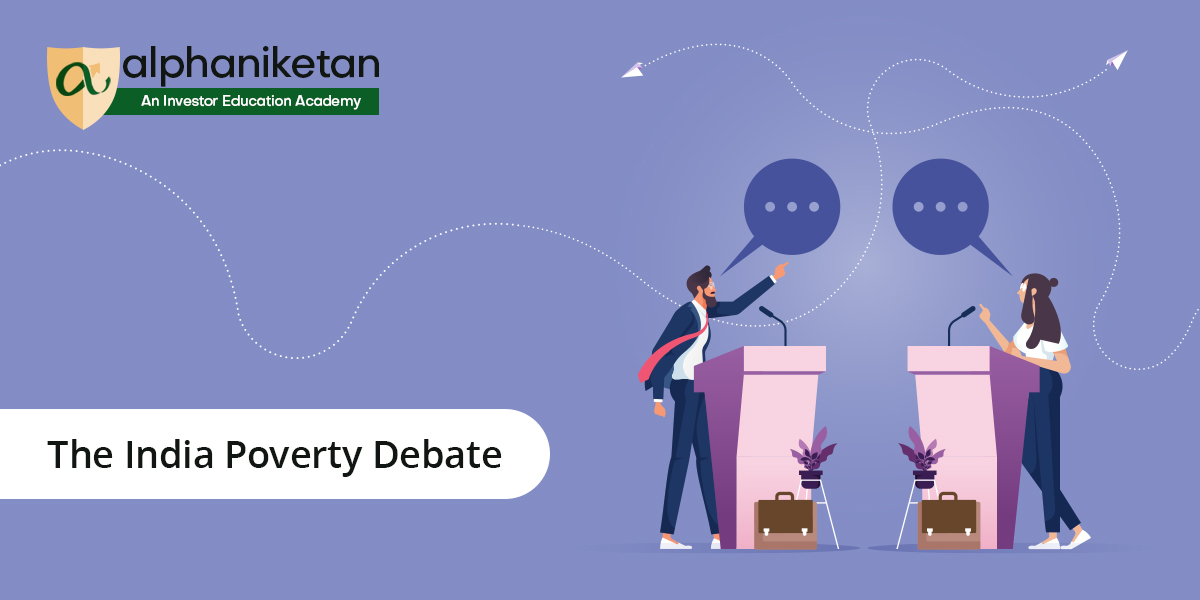It all started with a news report in April 2022 stating that a study published as an IMF working paper and authored by three reputed economists has concluded that India has, for all practical purposes, almost won the war over extreme poverty, defined as those living on less than US$ 1.9 in 2011 dollars per day in purchasing power terms. This study has for the first time factored the in-kind food subsidy provided under the PM Garib Kalyan Anna Yojana during the Covid pandemic and which continues till date. This set the cat among the pigeons, as it were, and the usual India baiters responded with a virtual campaign to state that India has actually scored very poorly on the poverty metric, albeit on a completely different measure of poverty and computation methodology like a threshold of US$ 3.2 a day and that too without including the in-kind food subsidy provided, etc. In fact, the narrative went to the illogical extent of contesting the methodology because it “wrongly” factors the provision of free monthly ration and other welfare measures to the majority of the population, as if it does not have any impact on the incidence of poverty. This has left most of the general public like us completely confused on India’s tryst with poverty and we are at a loss to understand if we have made any progress at all on this front after the British left us in utter penury some 75 years ago.
To state the obvious, poverty is a relative concept and means different things to different people. The needs of a citizen in a tropical climatic zone, like India and in a temperate or polar climatic zone are quite different in terms of calorific intake, clothing, shelter, heat, etc. Moreover, not all aspects of poverty and deprivation can be measured in monetary terms such as, say the quality of access to clean drinking water, access to health services, etc. Hence stipulating a one-size-fits-all threshold for measuring poverty may not be very realistic because a 2011 US$ 1.9 per day per person spending in PPP terms for a family of four would be much in excess of Rs.20,000 per month, not exactly “extremely poor” by conventional Indian standards. It cannot be anyone’s argument that India has completely conquered the scourge of poverty and destitution but only rabid India-baiters would go as far as to say that India has utterly failed in reducing the incidence of extreme poverty. One of the “intellectual” arguments against the conclusions of the above-cited IMF Working paper was that India should consider discontinuing the in-kind food subsidy provided if the poverty level is as low as claimed without acknowledging the fact that extreme poverty has come down partly because of the provision of in-kind food subsidies and other welfare measures. Another “intellectual” argument is that if poverty is as low as claimed, a few hundred Government jobs should not be attracting a million applicants, quite a few among them being overqualified for the job. This argument too fails the smell test because the attraction of a secure Government job may not really be directly correlated to the poverty level of the applicant.
A more recent United Nations report of October 2022 has highlighted the fact that the number of poor people in India fell by about 41.5 crores between 2005-06 and 2019-21 while characterising the feat as a “historic change”. This was a result of a joint study based on the Multidimensional Poverty Index (MPI) by the United Nations Development Programme and the Oxford Poverty and Human Development Initiative. MPI takes into consideration not just the income level but also other dimensions of poverty like nutrition, child mortality, years of schooling and attendance, cooking fuel, sanitation, clean drinking water, electricity, housing and asset holding. The report further added that based on the 2020 population data, India still has 22.9 crore poor people and this number could have changed for the worse because of the adverse effects of the Coved pandemic. The specific deprivation indicators where the scores tend to be low are the ones relating to nutrition, cooking fuel, sanitation and housing. It is important to note that the study indicates the poorest caste and religious groups saw the fastest absolute reduction in multi-dimensional poverty between 2015-16 and 2019-21. Multiple policy actions and schemes relating to education, nutrition, water, sanitation, employment and housing, the report says, have likely contributed to these improvements.
Whatever be the belaboured and agenda-laden narrative about India’s poverty statistics, there is no denying the fact that India stands foremost among democratic countries in pulling the largest number of its poor citizens from the tyranny of poverty and destitution over the last seven decades. It is certainly nobody’s argument that we could not have done better but the important point to highlight is that transcending poverty has been an incessant mission under every Government, irrespective of its political hue. India is now acknowledged as a lower-middle income economy with an average per capita GDP of around US$2,000 at current prices, i.e. equivalent to around US$7,200 on a purchasing power parity basis. From where the British left us in 1947, achieving this level of prosperity despite the myriad endemic problems that India faces, is a matter certainly worth celebrating and not denigrating as some of our “intellectuals” are prone to do. A recent example is of one such worthy saying that “the world’s greatest event manager” will milk the position of the Presidency of the G20 grouping of nations that India has been currently nominated to. As Indians, this leads one to the obvious question, “Do we want the country to be shy and coy about holding the position of President, G20”?
This article is authored by U.R. Bhat, Co-Founder at Alphaniti (www.alphaniti.com)
Thank you for reading this post, don't forget to subscribe!




